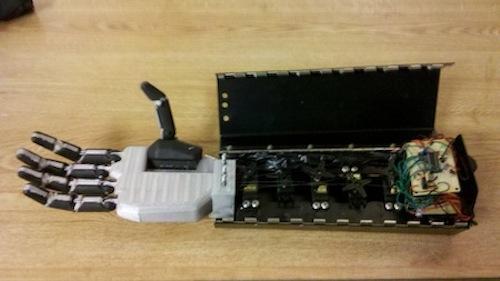How Mixed-Signal Integration With ARM Enables Smart Sensors
August 21, 2014

Key goals for next-generation embedded systems typically include one or more of the following: higher performance; lower cost; lower power; addition of wired and wireless connectivity; smaller form factors; and increased overall system efficiency. Solving any one of these objectives alone is difficult, so solutions that encompass numerous parameters must rely on the integration of multiple components.
A carefully thought-out combination of analog components with 32-bit processor cores from ARM and the right digital peripherals can address these goals in ways not possible with discrete solutions. Good candidates for integration that lead to maximum impact include analog amplifiers, ADCs, DACs, voltage references, temperature sensors, wireless transceivers, and signal processing accelerators.
There are many applications areas where there is potential benefit including industrial field Instrument applications/precision sensing, motor control, solar inverters, and many others. This article will examine how the integration of the right analog components with ARM M3/M4 processor cores leads to system level optimizations for field Instrument applications.

Field instruments: low power sensors used for process control
Field instruments are part of process control systems that are used in many industries such as oil and gas processing, food processing, automotive, and semiconductor manufacturing. They are often deployed in environments that are inhospitable in terms of remoteness, temperature extremes, and safety (e.g. explosive). Under these difficult conditions these devices must be able to reliably and accurately measure process variables such as temperature, pressure, and flow rate. Because of the challenges of accessing these devices, the trend is to design them with more intelligence so that they communicate more efficiently, self-calibrate, and better diagnose problems. The trend of adding intelligence to the edge of networks is one common to many applications and one that drives aggressive design goals for next-generation embedded systems. In the case of field instruments, the challenge is to add new functionality without increasing power consumption, size, and doing this without compromising measurement performance. Specific examples of new functionality being added to field instruments include HART modem communication capabilities, diagnostics of electrical circuits, and larger, higher resolution displays. In addition, optimization of an analog microcontroller for field instrument usage starts with an understanding of industry trends followed by a strong understanding of system level requirements. Knowledge of the system leads to identification of the right blocks to integrate.
There are significant system level benefits from a circuit level architecture perspective for a single chip data acquisition sub-system. This gives the possibility for aggressive power consumption, size, and performance goals. IP needed for an efficient and flexible field instrument data acquisition implementation includes: analog muxing, instrumentation amplifiers, sigma Delta ADCs, voltage references, programmable current sources, ARM M3 microcontroller core, flash, timers, watch dogs, and digital serial interfaces. The diagram shows the IP that when optimized for field instrumentation and integrated to work in concert provides gains in power efficiency and size, while allowing additional features to be added.
The majority of field instrumentation devices communicate via a two-wire analog loop that uses a 4mA to 20mA current signal. The reason for the common usage of this sort of loop is low cost and robustness as it is immune to noise and voltage drops. Also, the 4mA to 20mA loop can be used to power a field instrument. This limited power source makes these instruments very power sensitive given that current draw must be below the 4mA lower end current sourcing capability of the loop. Specifically that budget is 3.5mA. The sum of the current consumption of all of the electronics in the field instrument cannot be larger than this amount. For the data acquisition component, including signal amplification, analog to digital conversion, digital signal processing, diagnostics, calibration and control, the budget is less than 2mA. With a system level understanding of this budget, an integrated analog microcontroller can be designed and optimized for this application.
About the Author(s)
You May Also Like



.jpg?width=300&auto=webp&quality=80&disable=upscale)

